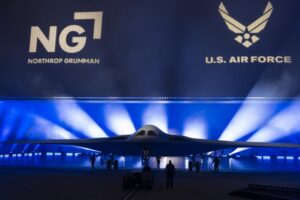
Inflationary and other macroeconomic pressures are buffeting the next-generation stealth bomber program, but Northrop Grumman [NOC] currently doesn’t expect to incur a loss during the initial production phase of the B-21 Raider, which remains on track for the first low-rate initial production (LRIP) contract this year and first flight later this year, the company said on Thursday. A loss on the B-21 is “possible” but not “probable,” which is why Northrop Grumman included a discussion of the program and ongoing…

 By
By 











